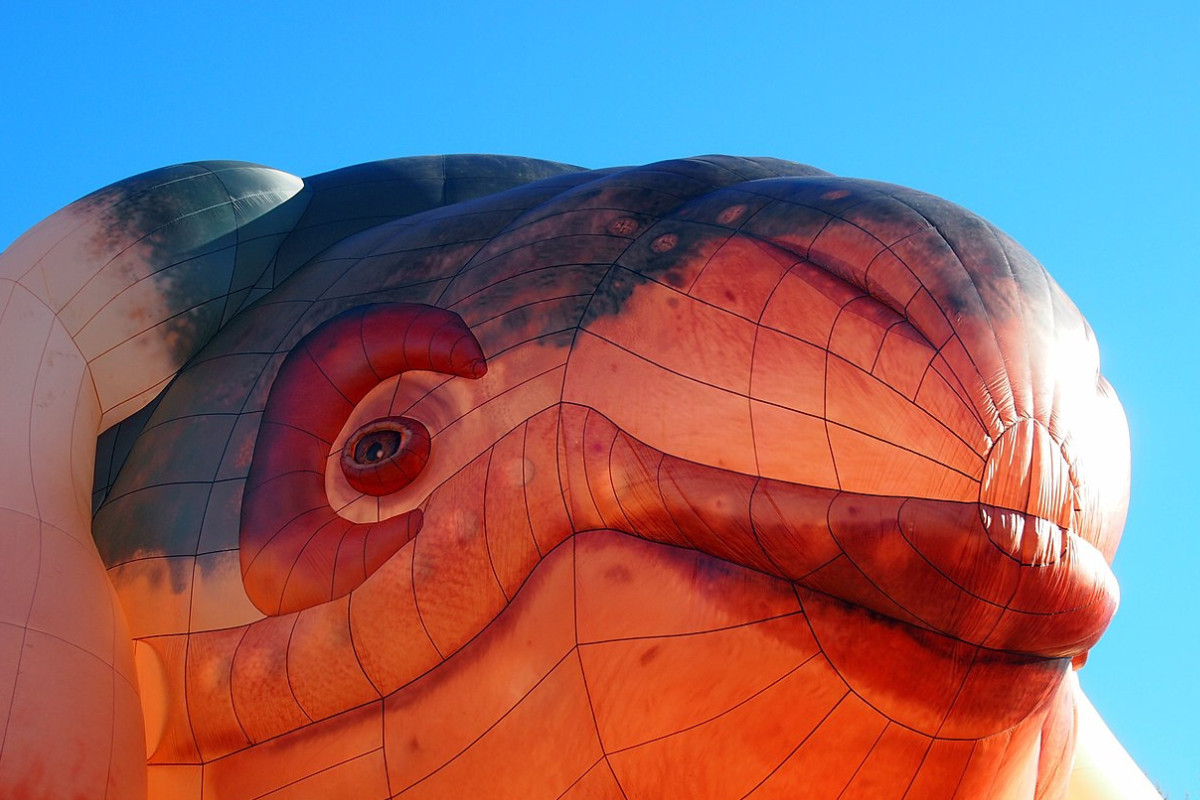
Throughout history, women in archaeology have encountered substantial and systemic obstacles in pursuit of their profession.
As archaeology Professor Claire Smith FAHA notes,
“Much has been accomplished since the 1990s, and in the early twenty-first century, women are a fundamental part of the archaeological social landscape. Despite this, women have not yet achieved equity in all parts of the workplace.
While almost 60% of Australian archaeologists are women, female archaeologists have difficulty in gaining tenure-track entry-level employment in Australian universities and are under-represented in senior positions.
Women are more evenly represented in the government sector, where they outnumber men in museum work and in cultural heritage management in the private sector consulting. Some barriers that women in archaeology face result from a glass ceiling — invisible barriers to advancement that are imposed from above — while other barriers relate more to the constraints fashioned by gender ideologies and gender roles.”
This International Women’s Day, we feature ten women in archaeology who have made significant contributions to their field, as recognised by our archaeological Fellows.
For more stories, check out today’s article from COSMOS profiling ‘remarkable and inspirational women in Australian science’.
Ten women in archaeology you should know about
1. Dr Anna Florin, Australian National University
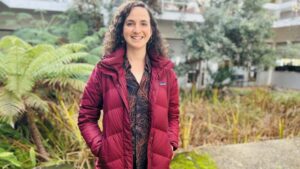
An archaeobotanist, Dr Anna Florin is interested in the role of plant foods, and their processing and management in world economies.
She works with charred plant macrofossils — food scraps from ancient fireplaces — to chart the diets of people in the past. Anna’s research covers Australia, Papua New Guinea and Southeast Asia, and offers insights into early human migration patterns outside Africa, ongoing adaptations to climate change throughout history, and reflections on plant and land management in ‘hunter-gatherer’ societies.
2. Dr Anna-Latifa Mourad-Cizek, Macquarie University
Dr Anna-Latifa Mourad-Cizek is a historian and archaeologist exploring the links between ancient and cultural encounters. Her research has focussed on relations between ancient Egypt and Western Asia during the second and third millennia BCE, and she is particularly interested in the dynamic movement of concepts, objects and people across geographic, social and cultural borders, and how this could lead to change.
From 2019 to 2022, Anna-Latifa researched how communities negotiate and maintain foreign relations by examining interactions between ancient Egypt and the Near East in the first half of the second millennium BCE, to inform our understanding of connections and adaptation in an increasingly globalised world.
Her other research interests include network dynamics, ancient community resilience to ecological and socio-political change, Old and Middle Kingdom tomb art and architecture, as well as digital epigraphic and archaeological technologies.
3. Dr Kellie Pollard, Charles Darwin University
A Wiradjuri archaeologist, lecturer and researcher at Charles Darwin University, Dr Kellie Pollard researches Indigenous-Australian contact archaeology, with a particular interest in Indigenous epistemologies, ontologies and axiologies, and truth-telling Australian history.
Kellie’s PhD examined thirty fringe camps, known as ‘long-grassers’, in the Darwin region in the Northern Territory, and illuminated the insights these camps provide into First Nations social, cultural and economic adaptations to colonialism from the initial contact period to the present. Learn more about long-grass camps in this article from The Conversation.
4. Dr Jillian Garvey, Dja Dja Wurrung Enterprises
Currently working with DJANDAK, an enterprise of the Dja Dja Wurrung Clans Aboriginal Corporation (DJAARA) in central Victoria, Dr Jillian Garvey is a zooarchaeologist who combines her background in science (vertebrate palaeontology) and archaeology to focus on the role of fauna in Australian archaeology.
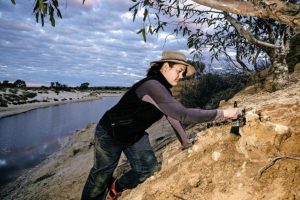
Through zooarchaeology she has collaborated with Traditional Owner groups to study the role of animals in the lives of First Nations people, including the economic and nutritional value of bush tucker. Jillian has more recently focused on combining Traditional Ecological Knowledge (TEK) and science to develop frameworks that weave together cultural knowledge and ontologies with zooarchaeology.
After spending 18 years as a research fellow in the Department of Archaeology and History at La Trobe (including ARC DECRA and LTU Tracey Banivanua Mar Senior Research Fellowship), Jillian is using her expertise to develop and lead the Dja Dja Wurrug Cultural Values Assessment program, a method that allows Djaara (Dja Dja Wurrug People) to record tangible and intangible cultural heritage across Djandak (Country). She is also helping to develop Djaara research capabilities which will help empower Djaara to lead their own research.
Outside of work, Jillian continues to be involved in research collaborations with several Traditional Owner communities, helping to tell the story of how people and animals lived on Country for millennia, and working towards decolonising zooarchaeology and the natural sciences.
5. Professor Lynley Wallis, Griffith University
With over twenty-five years’ experience in remote area fieldwork, Professor Lynley Wallis has presented new models that challenge fundamental notions about the timing and nature of colonisation of Australia. Her major research achievement is a highly significant contribution to the advancement of knowledge in Australian and global archaeology.
Lynley contributed to the recent re-excavation and analysis of Australia’s oldest evidence for human occupation, the oft-cited 65,000-year-old site of Madjedbebe in northern Australia, and is now leading a major survey and excavation program in Cape York Peninsula. She has explored aspects of frontier conflict in Queensland with Native Mounted Police, working to truth-tell and decolonise archaeological practice.
6. Dr Tristen Jones, The University of Sydney
Dr Tristen Jones is a lecturer of Museum and Heritage Studies, archaeologist, and curator. Her research interests are Australian Indigenous archaeology and heritage, with a focus on rock art, cultural landscapes, material culture and museum collections.
Recent research focused on understanding Pleistocene colonisation by Australia’s First Peoples and the role of rock art, as an ancient communication tool, in revealing more about the lives of early inhabitants. She has active research projects in the Kakadu region, Sydney and Cape York Peninsular working with First Nations communities to document and conserve rock art, in addition to museums collection research projects in Germany and the UK.
7. Dr Ariana Lambrides, James Cook University
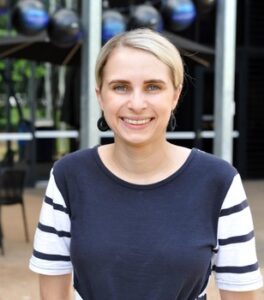
Dr Ariana Lambrides’ research focuses on the human palaeoecology of island and coastal settings through the study of archaeological fish remains, notably the dynamics of Indigenous fisheries across millennia, and how people have shaped biodiversity and landscapes throughout time.
She has worked across the Asia-Pacific region and is an ARC DECRA Fellow.
Currently, Ariana is researching Holocene fisheries around the Great Barrier Reef, specifically the dialogue between people and the local environment and how this shaped culture, landscape dynamics, and biodiversity over millennia. This research aims to provide a deep time perspective relevant to contemporary fisheries management within the Great Barrier Reef Marine Park.
8. Dr Caitlin D’Gluyas, University of New England
Dr Caitlin D’Gluyas specialises in Australian archaeology, cultural heritage and history, focusing on the impacts and outcomes of British colonisation in the eighteenth-and-nineteenth centuries with a particular interest in the management, and consequences, of unfree labour.
Her archaeological thesis focused on the historical study of juvenile convict labour that occurred at Point Puer, providing insight into past and present understandings of youth, masculinity and justice reform. In 2023, Caitlin received the Dr AM Hertzberg AO Fellowship at the State Library of New South Wales for her archaeological research of ‘people and things in early convict Parramatta’.
9. Dr Sofia Samper Carro, Australian National University
With two masters degrees and two doctorates, Dr Sofia Samper Carro is an expert in the taphonomic analysis of fauna remains to study human-animal interactions mainly on Pleistocene and early Holocene periods, particularly throughout Southeast Asia.
A self-described ‘Neanderthal fan’, her recent publications examine how Homo sapiens in Southeast Asia developed prehistoric fishing practices and technologies, and how this knowledge was passed down through generations.
10. Dr Shimona Kealy, Australian National University
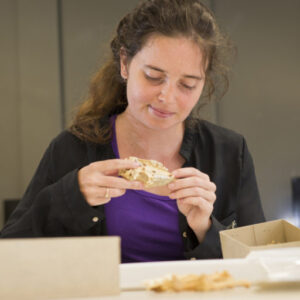
Dr Shimona Kelly is an archaeologist and palaeobiologist with a key interest in the early movements of people, cultures, and animals throughout the Southeast Asia and Australasia.
In particular, she’s interested in the patterns of occupation and cultures in island communities over the last 50,000 years in Wallacea, and the biological and ecological impacts of early human arrival on islands.
Her current research examines the prehistoric history of Lombok Island focusing on the early movement patterns of people crossing Wallace’s Line.

